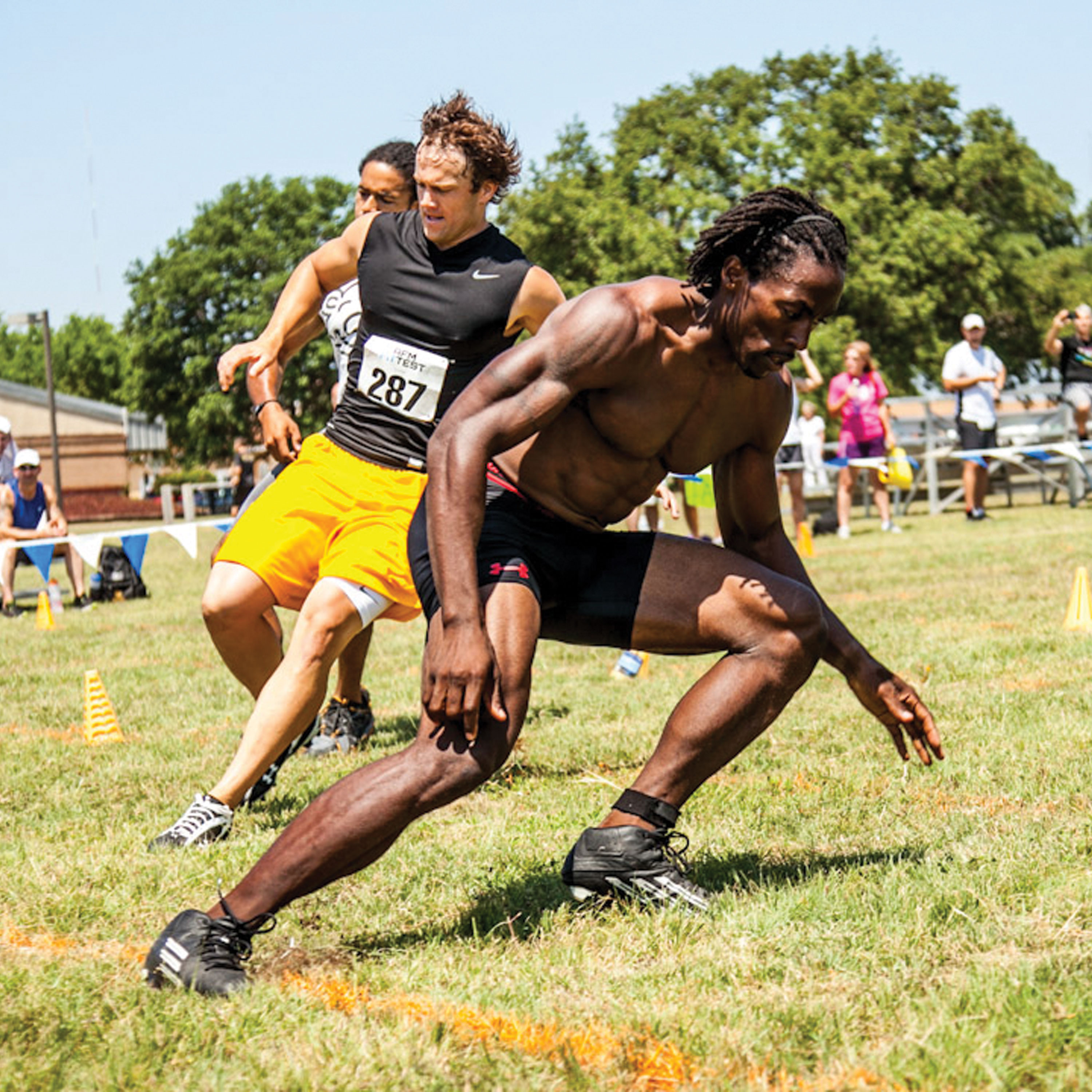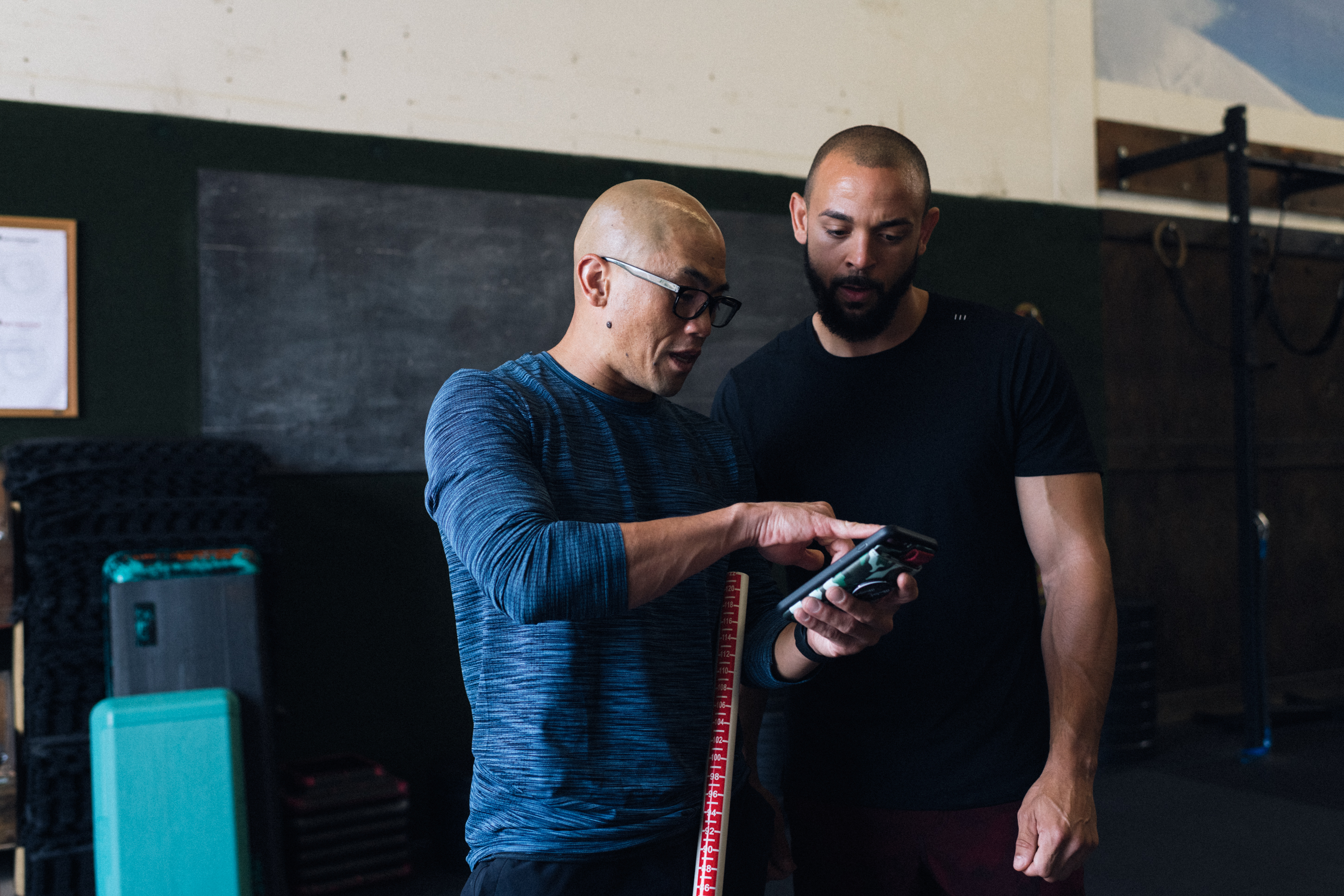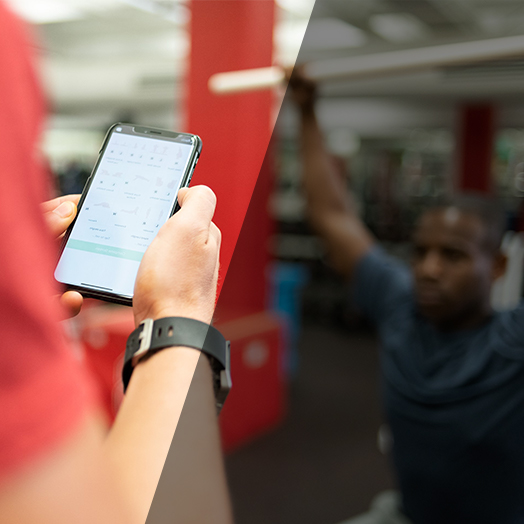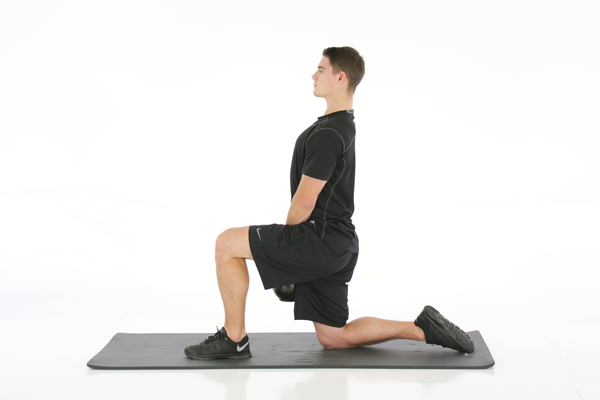Exploring Functional Movement
Written by Gray Cook FMS
Last winter’s work on the new Exploring Functional Movement DVD provided an opportunity for me to work with Erwan Le Corre, and to expose you to the wonderful work he’s doing with MovNat. After you read this, look into some of the history where Erwan has drawn a lot of his methods, opinions and principles. It goes far back, to a discipline called Le Methode Naturelle, which was a French movement very much like movements throughout Europe.
Erwan and I spent three days in three different environments to shoot this video. The first was on some property Danielle and I have in the mountains of Virginia on a beautiful little lake, where we did a lot of movement stuff. Every time we had a break, we grabbed a couple of YOLO standup paddle boards, got out on the water and played around.
The next environment we were in was the obstacle course at Hargrave Military Academy, a very old and well-respected military academy in Chatham, Virginia.
The third was in our physical therapy clinic.
Going from an almost wilderness situation to a structured outdoor situation to a structured indoor situation was our way of showing you that movement, natural movements and natural progressions can happen in any environment. It was cool to show the different environments, but the subject matter is always the same—movement.
With the invention of the Functional Movement Screen came a sort of tighter definition of corrective exercise, if you will. By that I mean we’ve always talked about corrective exercise, but without setting a baseline, we’re only assuming we’re correcting things. We don’t really have the evidence to demonstrate the correction’s success. We have anecdotal and subjective information.
People might say they feel like they move better, but if you’re going to have surgery, you don’t just want the surgeon to say, ‘Well, you know, a couple of people have done really well with this surgery.’ You want some evidence.
We should hold exercise and exercise program design to the same standards we wish on other professions.
So: With the invention of the Functional Movement Screen comes a tighter definition of corrective exercise. I’ve had that discussion with both Erwan and also with Pavel from the StrongFirst community. We see the pendulum. It always swings too far in either direction.
Early on in the Russian Kettlebell Challenge, we saw a lot of people who had very poor movement trying to load more and more kettlebell work on top of it. The way we answered that disconnect of quality was to create the CK-FMS, but that was only because people were ignoring some of the wonderful stuff Pavel did in his early DVDs and published works like The Naked Warrior, Relax into the Stretch, Super Joints and other similar work. Pavel has always talked about fundamental flexibility as a precursor to both strength acquisition and great movement patterns.
The CK-FMS helped people in the kettlebell community see where they were expecting to put loads of fitness on quite a bit of dysfunction, but then we had a problem. We had some people who really identified with that idea and never wanted to go heavy again. They never wanted to lift again—but that was never our intent.
Correct what you need to correct, and train what you can. It’s as simple as that.
If you’ve met the Functional Movement Screen minimum requirements, start training. Just watch it and make sure those minimums don’t erode. Make sure they grow a little bit. The goal of a movement screen—and I always say this—is not a ‘21.’ It’s just to get above the cut with ‘2s’ on everything, and no asymmetries.
Well. Again we see the pendulum.
People are focusing too much on the fitness aspect and forgetting the quality and the movement aspect. So we give them the movement baseline and show them how dysfunctional movement can get. Then they get obsessive compulsive about corrective exercise. The pendulum swings back and nobody ever goes long, heavy or fast again. Everything is all about correcting.
What Erwan and I talk about with MovNat is what people will ultimately ask:Where does this fit into Functional Movement Systems and in a functional continuum?
I use this analogy: Many of your dietary problems could be solved simply by getting a pure, more authentic diet, meaning let’s eat whole foods and unprocessed foods. If you’re going to eat meat, eat meat from a good pure source, a natural source, and just stay away from highly refined ‘foods.’
It’s almost a Paleo approach. Think of how many dietary issues—from portion control to glycemic index control—could be cleared up by removing a lot of the highly processed, empty foods from your diet.
What if we shine that same light on exercise? Before you get obsessive compulsive about corrective exercise, what if you simply took a more functional, more authentic, more holistic approach to what you’re doing, and at the same time delete some of those things that aren’t getting you anywhere?
In many of the things we do in the gym, we haven’t applied the rule of economy—the 80/20 rule. Is this really worth my time?
‘Why are you doing cardio?’
‘I have to lose some weight.’
‘How long have you been doing cardio?’
‘Five years.’
‘How much weight have you dropped in five years?’
‘Less than five pounds.’
Admit this is not working!
It doesn’t mean cardio is bad and it doesn’t mean you can’t drop weight. It means the way you’re pursuing it isn’t working. Simply admit that and move forward.
Now, here’s the way Erwan and I positioned Exploring Functional Movement. First of all, do as many whole movement patterns as possible. Before you get obsessive compulsive about corrective exercise, go back into this natural exploration of movement.
Many of Erwan’s exercises fit the definition of self-limiting exercises. The ability to do a volume of exercise is limited by technical precision.
 Just imagine a balance beam. You can’t overdo work on a balance beam unless you’re really, really good at balancing. Otherwise you’re on and off the beam, restarting continually. It’s the same with jump rope. You can’t overdose jump rope like you can with jogging, because most of us don’t have a good enough technique to go long enough to create a tendonitis.
Just imagine a balance beam. You can’t overdo work on a balance beam unless you’re really, really good at balancing. Otherwise you’re on and off the beam, restarting continually. It’s the same with jump rope. You can’t overdose jump rope like you can with jogging, because most of us don’t have a good enough technique to go long enough to create a tendonitis.
That’s a big reason why I love some of these natural endeavors. Another reason is they’re sensory rich. There’s a lot more sensory information coming in.
Compare that to laying on your back doing a bench press—great load on the push muscles and great load on the pecs, but not a lot of sensory information.
We could probably take out half of your brain and you could still bench press. I’m not sure you could do a Turkish getup, that you could stand up on a paddleboard, run a technical trail or walk on a balance beam. Things that require your mind to be engaged and your sensory pathways to be open are very, very important.
The number one pre-requisite for sensory pathways—proprioceptors and muscle spindles—is appropriate mobility. If your ankle is locked up, you’re never going to have a good experience on a balance beam, because you need the ankle mobility to feel the subtle adjustments needed to balance. If the ankle input is taken away, you’re going to start dipping your shoulders, waving your arms and flailing your body just to stay on the beam. If you’d had the simple adjustments from the foot and ankle, maybe a slight bend of the knee or a simple tilt of the pelvis could have kept you on the beam.
Erwan challenges us to dispense with a lot of the things in the gym that probably aren’t engaging the sensory system, and to discard our focus on single body parts. With the time you free up by removing that, you can inject some whole body, primal natural movements.
This means we’d see these patterns throughout the lifespan of somebody living in a natural, authentic environment. They would have to crawl. They’d have to balance. They would have to run. They’d have to climb. They would have to manipulate the body and go under and over obstacles.
They’d do this in a smooth and graceful way because an injury in a natural environment could mean problems. Doing things in a smooth, fluid and natural way, paying attention to what you’re doing, is a safety issue and a pre-requisite.
The first DVD we did last year, which we talked about last week, is Key Functional Exercises You Should Know—practice and precision and great ideas for correction.
Then I go right from a Yang approach to a Yin approach, the polar opposite or the dance of opposites. I do this thing with Erwan out in nature and talk about how it’s not all about corrective exercise. Sometimes just taking a more holistic exercise approach could get you there.
It almost seems like I’m contradicting myself, whereas in essence I’m showing you the full spectrum of what I hope for you.
If you still have deficiencies or if you have big problems, it’s almost like using supplementation. Still eat the whole foods and still have the organic diet, but hey, maybe you need to supplement Vitamin D. We might need to supplement with some correctives to help you get your squat back in a fast and efficient manner.
Even though these two DVDs, these two explorations—one on the technical precision of functional exercise and the other on the natural approach to functional exercise—look like they contrast each other, and maybe they do, but they also complement each other nicely. When you need a corrective, you should do it, but only do the corrective once you’ve cleaned up your own workout and see that your workout isn’t what’s causing the poor movement in the first place.
That’s the one aha moment a lot of people have when they come to a Functional Movement Screen workshop. They go back and work with their clients and realize the client movement screens aren’t that great. Yet they’ve been the people designing the clients’ programs for the past year.
 Maybe your program is part of the bad movement pattern. It’s okay. Own that and do something better the next day.
Maybe your program is part of the bad movement pattern. It’s okay. Own that and do something better the next day.
How do you think we came up with some of our corrective approaches in the first place? We were the ones jacking people up, so we figured the least we could do was to un-jack them.
It would be my goal for people to look at both of these videos, then go back and forth to see how they really complement each other. One is my journey deep into practice, and the other is my journey deep into play.
Related Resources
-
The Power of First Impressions
Posted by Brett Jones
-
Half Kneeling for the Hip and Ankle
Posted by Gray Cook





